 |
|||||||||||||||||||||||||||||||||||||||||||||||||||||||||||||||||||||||||||||||||||||||||||
|
Gear For musicians or geeks interested in musical instruments & equipment. |
|||||||||||||||||||||||||||||||||||||||||||||||||||||||||||||||||||||||||||||||||||||||||||
| The nice, clean Tricks stage: sound & lights all set up and ready to go. | |||||||||||||||||||||||||||||||||||||||||||||||||||||||||||||||||||||||||||||||||||||||||||
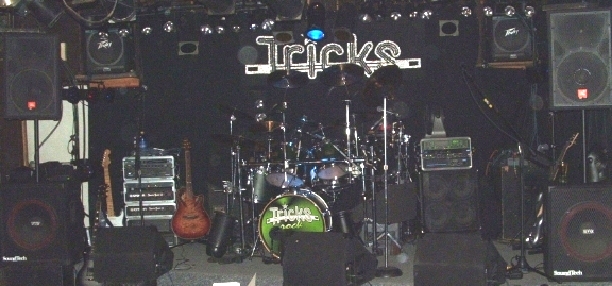 |
|||||||||||||||||||||||||||||||||||||||||||||||||||||||||||||||||||||||||||||||||||||||||||
| But how does the stage get this way? | |||||||||||||||||||||||||||||||||||||||||||||||||||||||||||||||||||||||||||||||||||||||||||
|
|
|||||||||||||||||||||||||||||||||||||||||||||||||||||||||||||||||||||||||||||||||||||||||||
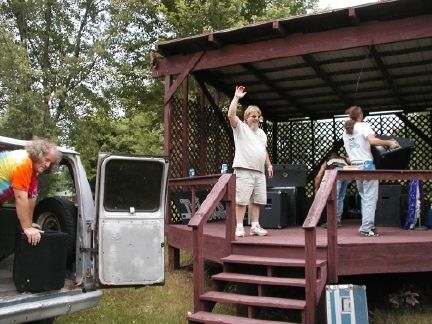 |
|||||||||||||||||||||||||||||||||||||||||||||||||||||||||||||||||||||||||||||||||||||||||||
|
Step one is to unload the big ugly Tricks Van. We have a 3/4 ton Econoline with a 1 ton suspension kit (Thanks to Dave Bluhm) and 8 cylinders baby. The grey Tricks van can fly right over bumpy roads with a heavy load of speakers and power amps, but it gets really bad gas mileage.
|
|||||||||||||||||||||||||||||||||||||||||||||||||||||||||||||||||||||||||||||||||||||||||||
Heave-Ho! |
|||||||||||||||||||||||||||||||||||||||||||||||||||||||||||||||||||||||||||||||||||||||||||
|
|
|||||||||||||||||||||||||||||||||||||||||||||||||||||||||||||||||||||||||||||||||||||||||||
Let there be Lights! |
|||||||||||||||||||||||||||||||||||||||||||||||||||||||||||||||||||||||||||||||||||||||||||
|
Rick and Krys usually come one evening earlier than the rest of the boys in order to set up the light show
|
|||||||||||||||||||||||||||||||||||||||||||||||||||||||||||||||||||||||||||||||||||||||||||
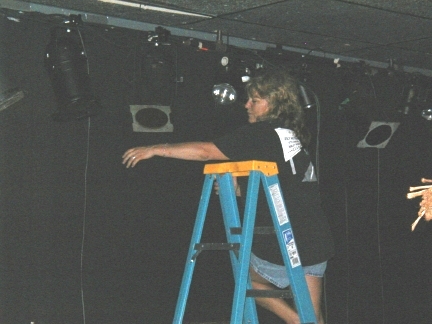 |
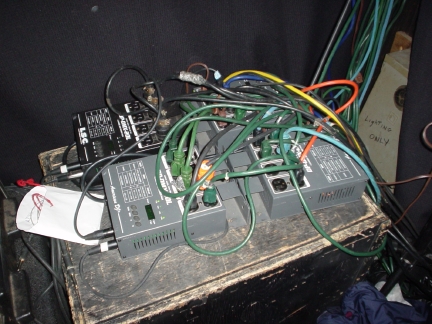 |
||||||||||||||||||||||||||||||||||||||||||||||||||||||||||||||||||||||||||||||||||||||||||
|
Krys does the lion's share of the work hanging 44 lights: 13 par-56 lights, 8 par-38B lights, 14 par-36 pin spots, 4 multi-color effect lights, 5 strobe lights, and a fog machine. Krys hangs the lights with clamps, velcro strips, and chains - (and blood, sweat, and tears).
|
Krys has to run AC cables from all the lights into her power packs - 4 Elation 4-channel DMX dimmer packs, that's 16 channels, 10 amps or 1000 watts per channel.
|
||||||||||||||||||||||||||||||||||||||||||||||||||||||||||||||||||||||||||||||||||||||||||
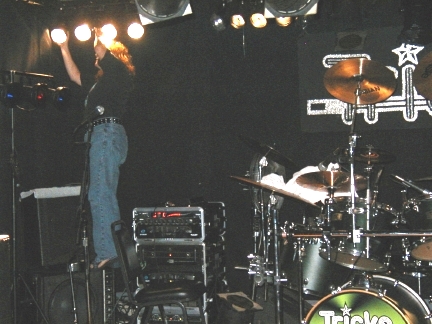 |
|||||||||||||||||||||||||||||||||||||||||||||||||||||||||||||||||||||||||||||||||||||||||||
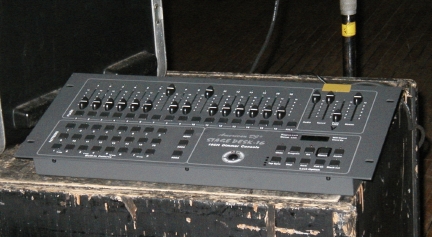 |
|||||||||||||||||||||||||||||||||||||||||||||||||||||||||||||||||||||||||||||||||||||||||||
|
Krys runs a DMX signal cable back to her Stage Desk-16, a 16-Channel Dimmer Console that has 24 programmable presets, tap-sync or audio-activated speed control for the programmable chase sequencing, and all kinds of fancy stuff that only lightshow people understand.
|
|||||||||||||||||||||||||||||||||||||||||||||||||||||||||||||||||||||||||||||||||||||||||||
|
After hanging lights, running power cables, plugging in power packs and the controller, Krys has to make sure the lights are all aimed in an aesthetically pleasing manner.
Then Krys takes a break! |
|||||||||||||||||||||||||||||||||||||||||||||||||||||||||||||||||||||||||||||||||||||||||||
|
|
|||||||||||||||||||||||||||||||||||||||||||||||||||||||||||||||||||||||||||||||||||||||||||
Let there be Sound! |
|||||||||||||||||||||||||||||||||||||||||||||||||||||||||||||||||||||||||||||||||||||||||||
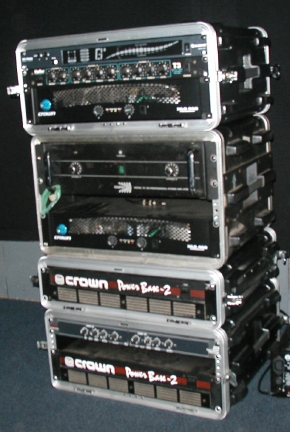 |
|||||||||||||||||||||||||||||||||||||||||||||||||||||||||||||||||||||||||||||||||||||||||||
|
AMP STACK Once we finish unloading the van, we set up the power amps and racks - the brains and power for creating the Tricks sound. *Rick's rack has a Sabine RT-7000 rack-mount tuner, a custom Hafler T-3 guitar preamp (thanks to Dale Boysen and Bill Hannipal - Bill is president of Stedman Microphones & Accessories), and a stereo Crown XLS 202 Power Amp, 100 watts RMS per channel. *Under Rick's rack is the rack for monitor amps. Steve's discrete monitor system is powered by a Bi-Amp TC-120 stereo amp, 150 watts per side. For the 3 front floor monitors, we have a Crown XLS 402 Power Amplifier, 200 watts per side. *The bottom 2 rack cases hold the power for the front "house" speakers. We have 2 Crown PowerBass-2 Amplifiers, 400 watts per side, each. One Crown powers the bottom 2 subwoofers & one Crown powers the 2 top-end speakers. We use a Behringer CX2310 Super-X Pro Crossover for clean sub-bass power. Everything is installed in 19" Gator rack cases. We use at least 4 separate AC circuits: 2 for lights and 2 for sound. |
|||||||||||||||||||||||||||||||||||||||||||||||||||||||||||||||||||||||||||||||||||||||||||
|
|
|||||||||||||||||||||||||||||||||||||||||||||||||||||||||||||||||||||||||||||||||||||||||||
|
Ozzy's Bass Rig Meanwhile, on the other side of stage, Ozzy sets up his bass rig. Onstage is a Hartke HA 1400 Amplifier driving Sonic Speaker cabinets; a 4x10" cabinet and a 1x15" cabinet. |
At Ozzy's Feet For effects, Ozzy has a Digitech BP200 multiple effects and a Boss BE-5. |
||||||||||||||||||||||||||||||||||||||||||||||||||||||||||||||||||||||||||||||||||||||||||
|
At Rick's Feet: |
|||||||||||||||||||||||||||||||||||||||||||||||||||||||||||||||||||||||||||||||||||||||||||
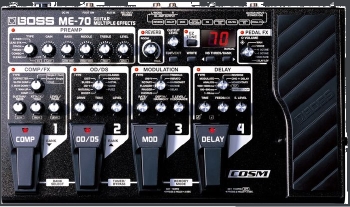 |
|||||||||||||||||||||||||||||||||||||||||||||||||||||||||||||||||||||||||||||||||||||||||||
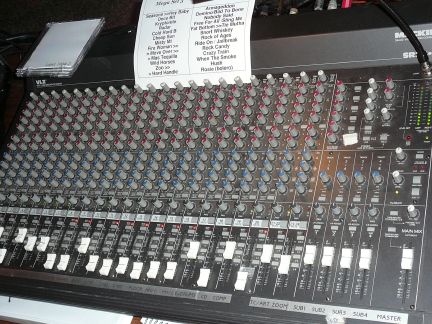 |
|||||||||||||||||||||||||||||||||||||||||||||||||||||||||||||||||||||||||||||||||||||||||||
|
The Sound Board While all the stage gear is getting set up, Sound Technician Dave is setting up and tweaking his Mackie SR24x4 |
|||||||||||||||||||||||||||||||||||||||||||||||||||||||||||||||||||||||||||||||||||||||||||
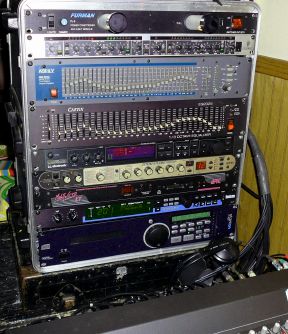 |
|||||||||||||||||||||||||||||||||||||||||||||||||||||||||||||||||||||||||||||||||||||||||||
|
The Dave Lopez Effects Rack Dave has 8 electronics units in the Tricks effects rack - from the top: |
|||||||||||||||||||||||||||||||||||||||||||||||||||||||||||||||||||||||||||||||||||||||||||
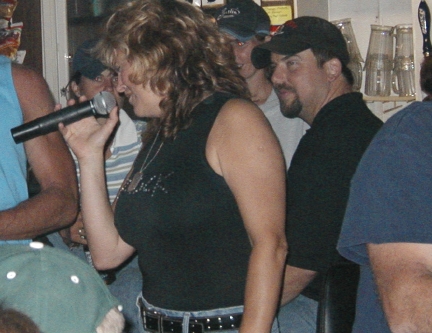 |
|||||||||||||||||||||||||||||||||||||||||||||||||||||||||||||||||||||||||||||||||||||||||||
|
Shure SM-58 & Krys has cordless freedom with her cordless SM-58 microphone. |
|||||||||||||||||||||||||||||||||||||||||||||||||||||||||||||||||||||||||||||||||||||||||||
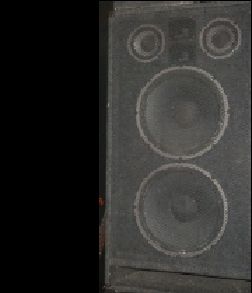 |
|||||||||||||||||||||||||||||||||||||||||||||||||||||||||||||||||||||||||||||||||||||||||||
|
The "Fronts" In larger rooms, Tricks uses 2 And It Looks Like This (center below): |
|||||||||||||||||||||||||||||||||||||||||||||||||||||||||||||||||||||||||||||||||||||||||||
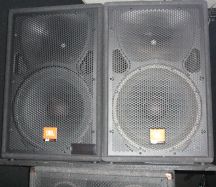 |
|||||||||||||||||||||||||||||||||||||||||||||||||||||||||||||||||||||||||||||||||||||||||||
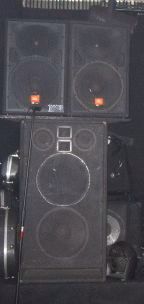 |
|||||||||||||||||||||||||||||||||||||||||||||||||||||||||||||||||||||||||||||||||||||||||||
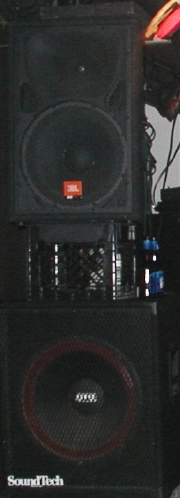 |
|||||||||||||||||||||||||||||||||||||||||||||||||||||||||||||||||||||||||||||||||||||||||||
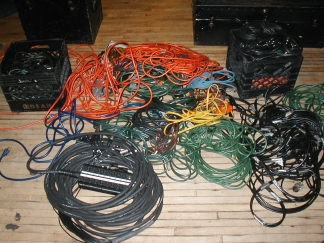 |
|||||||||||||||||||||||||||||||||||||||||||||||||||||||||||||||||||||||||||||||||||||||||||
|
In smaller rooms and for "Tricks Lite gigs, Tricks uses our JBL Speaker cabinets with one 15" and a wide-dispersion midrange horn, along with the SoundTech front loaded 18" cabinets for sub frequencies (left photo) |
|||||||||||||||||||||||||||||||||||||||||||||||||||||||||||||||||||||||||||||||||||||||||||
|
The Cord Mess |
|||||||||||||||||||||||||||||||||||||||||||||||||||||||||||||||||||||||||||||||||||||||||||
|
|
|||||||||||||||||||||||||||||||||||||||||||||||||||||||||||||||||||||||||||||||||||||||||||
Let there be Drums! |
|||||||||||||||||||||||||||||||||||||||||||||||||||||||||||||||||||||||||||||||||||||||||||
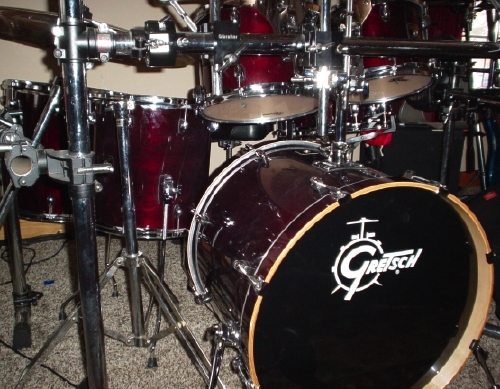 |
|||||||||||||||||||||||||||||||||||||||||||||||||||||||||||||||||||||||||||||||||||||||||||
| While Dave, Ozzy, Krys and Rick to set up all the lights and sound gear, Steve is setting up his drums. In 2009 Steve bought a New Gretsch Catalina All-Maple 6 piece Drum Kit. The story of Steve's drumset is an ever-evolving tale which is best told in Steve's words: |
|||||||||||||||||||||||||||||||||||||||||||||||||||||||||||||||||||||||||||||||||||||||||||
|
Gretsch Drums
• Dark Cherry with custom Tricks bass drum head cover, (Thanks Krys). |
|||||||||||||||||||||||||||||||||||||||||||||||||||||||||||||||||||||||||||||||||||||||||||
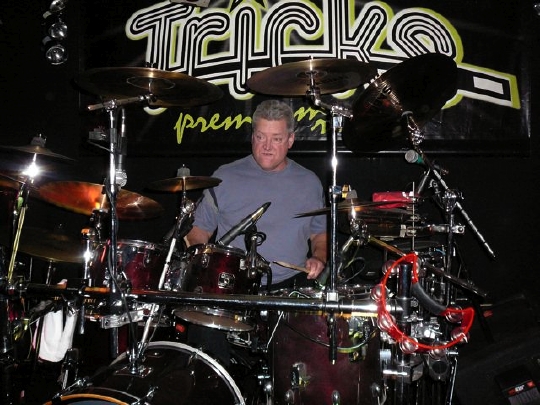 |
|||||||||||||||||||||||||||||||||||||||||||||||||||||||||||||||||||||||||||||||||||||||||||
| Dampening: For many years I’ve used my own system for muffling to control drumhead ring. That consisted of bar napkins and duct tape. When I got the Gretsch kit decided to use moongels. I was introduced to these at the Barn Fly studio which has a Yamaha kit dampened with moongels. I’m very pleased with the effect and now I don’t even carry duct tape at all. Cymbals: When I broke my 14” Paiste top hi-hat cymbal a few years ago I went to the drum shop with an open mind. The Paiste sounded great for the closed “chik” sound but I tend to play the other 15” hats for that. I was looking for a cymbal that would sound good for the half-open and heavy “Shhh” sound that I needed. After trying several out, the obvious choice to my surprise was coupling the bottom Paiste sound edge with a new Zildjian A crash. (I have been a Paiste or Sabian cymbal player forever). As I have a way of doing regularly, I broke the Zildjian near the end of 2009 but replaced it with the same. Drumheads: For 2010 the Tricks drum kit is newly outfitted with Aquarian drumheads. 2009 was Remo heads. This is my way of slightly changing the sound of my drums from year to year. A luxury the big guys can’t do since most of them endorse one head or another and cannot be seen playing anything else. Mic’s: I moved the Electrovoice ND868 to the floor tom. The kick drum is mic’d up with Roger’s Shure beta 52A Percussion Sticks |
|||||||||||||||||||||||||||||||||||||||||||||||||||||||||||||||||||||||||||||||||||||||||||
| The drums are mounted on their own stands. Cymbal arms/booms are all clamped to a 3-sided Gibraltor Rack. |
|||||||||||||||||||||||||||||||||||||||||||||||||||||||||||||||||||||||||||||||||||||||||||
| "Way over on my left - 4 Electronic drum pads are plugged into an Alesis DM5 Drum Module (right) which has over 500 sounds of which I use about 30. They sound great, just what I need for that additional effect now and then."
Steve also uses a |
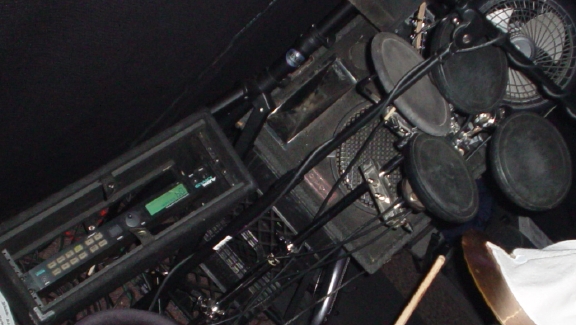 |
||||||||||||||||||||||||||||||||||||||||||||||||||||||||||||||||||||||||||||||||||||||||||
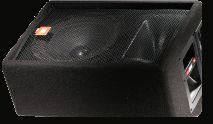 |
|||||||||||||||||||||||||||||||||||||||||||||||||||||||||||||||||||||||||||||||||||||||||||
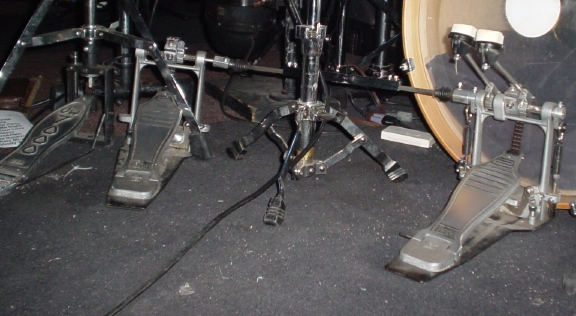 |
"Hi-Hat Pedal is a Drum Workshop (DW) Kick drum double pedals are top of the line Yamaha Most of my cymbal stands are Tama - as is my throne. Drum heads are Remo clear pinstripe. Snare head is a coated powerstroke 3. I put on new heads a couple times a year, snare drum - 3 or 4 times." |
||||||||||||||||||||||||||||||||||||||||||||||||||||||||||||||||||||||||||||||||||||||||||
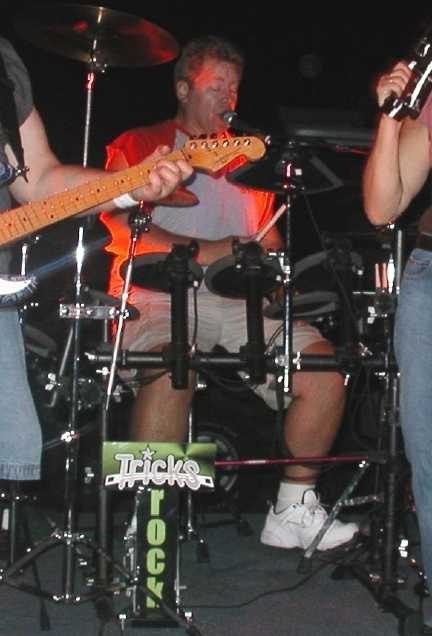 |
|||||||||||||||||||||||||||||||||||||||||||||||||||||||||||||||||||||||||||||||||||||||||||
|
Tricks Lite
Steve uses his Yamaha electric drum kit for smaller and quieter gigs. "Tricks Lite" is the name we chose for back yard parties, weddings, and other gigs where someone wants Tricks at a bargain price or at lower volume levels than you hear when Tricks is in the bars. |
|||||||||||||||||||||||||||||||||||||||||||||||||||||||||||||||||||||||||||||||||||||||||||
Let there be Guitar! |
|||||||||||||||||||||||||||||||||||||||||||||||||||||||||||||||||||||||||||||||||||||||||||
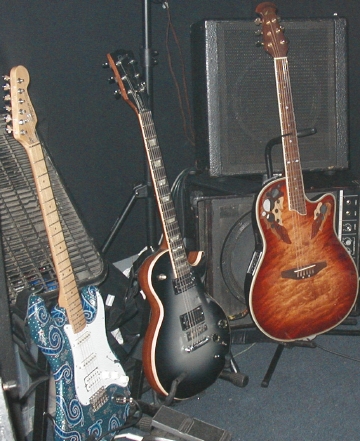 |
|||||||||||||||||||||||||||||||||||||||||||||||||||||||||||||||||||||||||||||||||||||||||||
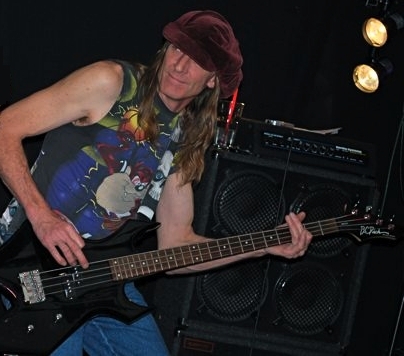 |
|||||||||||||||||||||||||||||||||||||||||||||||||||||||||||||||||||||||||||||||||||||||||||
|
Ozzy's main axe is a BC Rich Warlock 4-string Bass. |
|||||||||||||||||||||||||||||||||||||||||||||||||||||||||||||||||||||||||||||||||||||||||||
|
Rick brings 3 guitars to play each night: |
|||||||||||||||||||||||||||||||||||||||||||||||||||||||||||||||||||||||||||||||||||||||||||
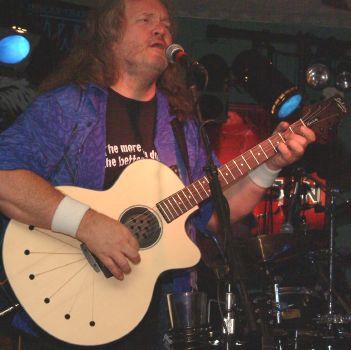 |
|||||||||||||||||||||||||||||||||||||||||||||||||||||||||||||||||||||||||||||||||||||||||||
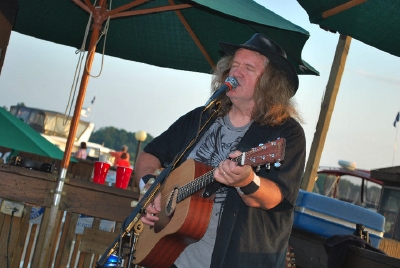 |
|||||||||||||||||||||||||||||||||||||||||||||||||||||||||||||||||||||||||||||||||||||||||||
| 2007 addition to Rick's guitar arsenal: Babicz Identity Series Jumbo Rosewood Cutaway Questions about the Babicz? - |
|||||||||||||||||||||||||||||||||||||||||||||||||||||||||||||||||||||||||||||||||||||||||||
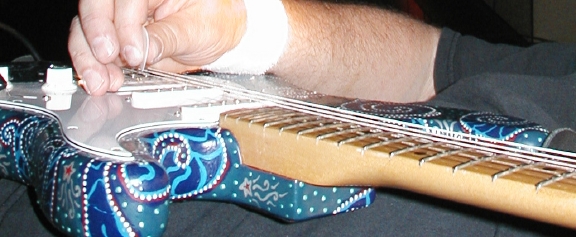 |
|||||||||||||||||||||||||||||||||||||||||||||||||||||||||||||||||||||||||||||||||||||||||||
|
Former Tricks guitarist/vocalist Dale Boysen did the custom work on Rick's Strat; installing a Dimarzio Tone Zone humbucking pickup and custom fret wire. The Strat's cool hippy paint job is by Heather Maloley. |
|||||||||||||||||||||||||||||||||||||||||||||||||||||||||||||||||||||||||||||||||||||||||||
Rick's 1974 Les Paul Guitar |
|||||||||||||||||||||||||||||||||||||||||||||||||||||||||||||||||||||||||||||||||||||||||||
|
Rick bought his Les Paul Guitar brand new in 1974. Rick says, "It was love at first site when I saw it in the music store in 1974, and I HAD to have it. It's been my main axe for all these years since then". |
|||||||||||||||||||||||||||||||||||||||||||||||||||||||||||||||||||||||||||||||||||||||||||
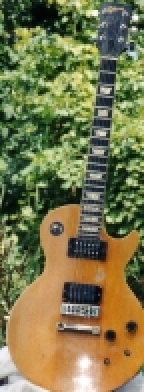 |
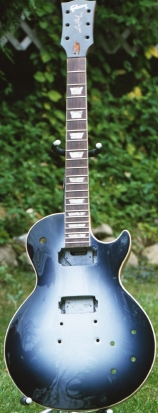 |
||||||||||||||||||||||||||||||||||||||||||||||||||||||||||||||||||||||||||||||||||||||||||
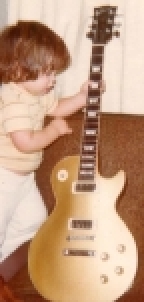 |
|||||||||||||||||||||||||||||||||||||||||||||||||||||||||||||||||||||||||||||||||||||||||||
|
The Les Paul was painted gold metalflake when it was new, and stayed that way for 5 years. (That's Jeremy Dutkiewicz on the left with the new Les Paul).
|
|||||||||||||||||||||||||||||||||||||||||||||||||||||||||||||||||||||||||||||||||||||||||||
|
When Rick and Dale got together in 1979, Dale insisted on stripping "that ugly paint" from Rick's Les Paul. Dale was very much into natural finished wood, so the Les Paul had the clear coat look (left photo) from 1979 until 2001, when Dale did the current paint job (right photo - paint barely dry).
|
|||||||||||||||||||||||||||||||||||||||||||||||||||||||||||||||||||||||||||||||||||||||||||
|
|
|||||||||||||||||||||||||||||||||||||||||||||||||||||||||||||||||||||||||||||||||||||||||||
|
After all the work of putting the pieces of the stage puzzle together, let the fun begin! All we have to do now is hope that all this gear holds together while Tricks is crashing and bashing and head-banging.
|
|||||||||||||||||||||||||||||||||||||||||||||||||||||||||||||||||||||||||||||||||||||||||||
Let there be Rock! |
|||||||||||||||||||||||||||||||||||||||||||||||||||||||||||||||||||||||||||||||||||||||||||
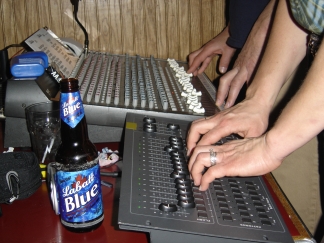 |
|||||||||||||||||||||||||||||||||||||||||||||||||||||||||||||||||||||||||||||||||||||||||||
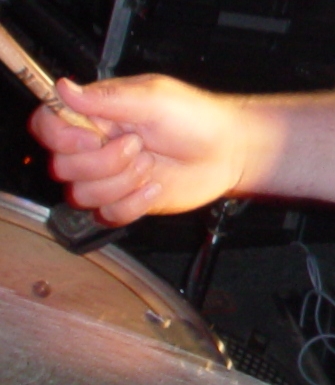 |
|||||||||||||||||||||||||||||||||||||||||||||||||||||||||||||||||||||||||||||||||||||||||||
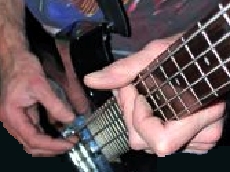 |
|||||||||||||||||||||||||||||||||||||||||||||||||||||||||||||||||||||||||||||||||||||||||||
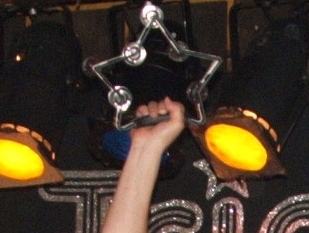 |
|||||||||||||||||||||||||||||||||||||||||||||||||||||||||||||||||||||||||||||||||||||||||||
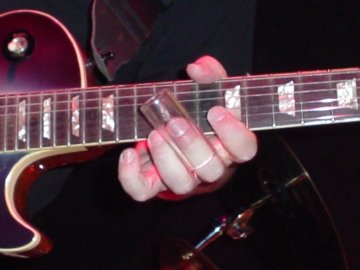 |
|||||||||||||||||||||||||||||||||||||||||||||||||||||||||||||||||||||||||||||||||||||||||||